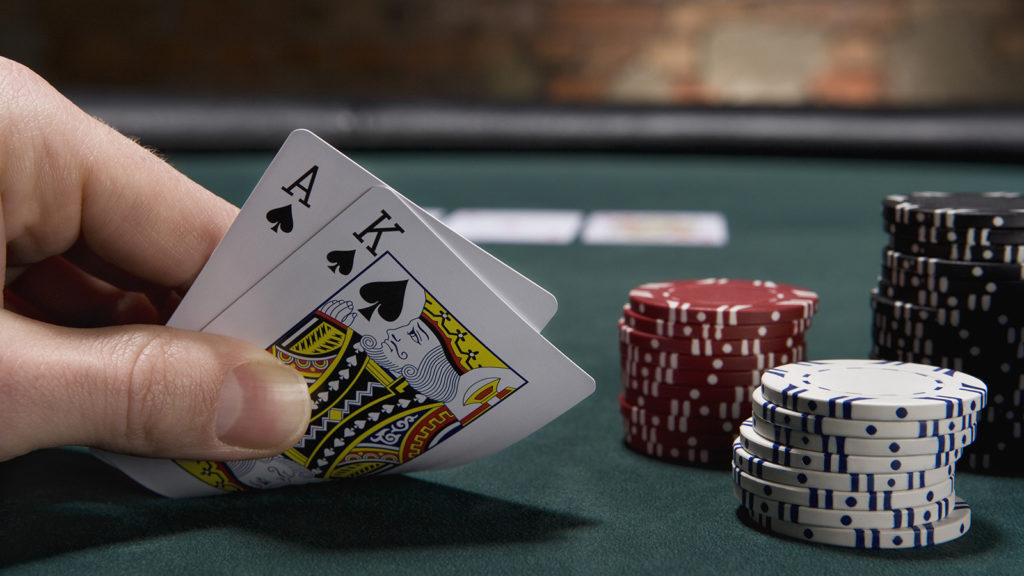The most common misconception when it comes to the aim of Blackjack is that you must be the first to reach the value of 21 with your cards. This is incorrect. In fact, the aim is essentially just to beat the dealer. This is then done by either drawing a hand value that’s higher than the dealer’s, by the dealer drawing a hand value higher than 21 – going bust – or by being the first to hold a hand valuing 21 on your first two cards.
As the casino game with the lowest house edge – meaning that the game falls in the favour of the player – Blackjack continues to be popular amongst both experienced players and beginners alike.
Read on to go back to basics, and discover how to play the beloved game.
Step one:
Once you’ve found where you wish to play the game, whether it be at an online or at an on-land casino, you’ll need to exchange your money for chips. This is often done by placing the amount you want to play with on the table.
For security reasons, the dealer won’t take anything out of your hand. Instead, they will pick it up from the table and count it clearly for the pit boss and cameras to see.
Once you’ve received your chips, pick how many of them you want to place down for your initial wager. There’ll be a table minimum and maximum to help you decide.
Step two:
Once all players have placed their bets, the dealer will deal one card, face up, to each player at the table, going clockwise. They will then place one card face down for themselves. Next, they will deal one more card to each player, and another for themselves, all face up.
Step three:
Now you’re ready to make your first real decision, depending on the cards you have in front of you. The dealer will start with the person on their left, and as it comes around to your turn, you’ll add the value of your cards together. This could be anything from four to 21.
If you’re dealt a ten-value card (Jack, Queen or King) and an Ace, which can be valued at one or 11, you have a Blackjack! If the dealer also has a Blackjack, you won’t have won anything, but if they don’t – you’ll win a payout worth 1.5x your wager.
Step four:
If no one has the value of 21, the dealer will turn to each player, in order, to see how they wish to continue playing the round. There are five different ways you can play your hand, each with their own unique hand signal so that each player, the dealer, and the cameras, can see what you have chosen to do.
You can choose to:
- Stand – if you’re happy with the value of your first two cards, you can stand (decline any more cards), and the dealer will move to the next player. To signal this, wave your hand or simply place an open palm over the table.
- Hit – if you wish to increase the value of your hand, you can hit – which means asking the dealer for more cards, one at a time. You can keep going until you either bust (go over 21), or stand. To signal this, all you have to do is tap with your finger.
- Double down – if you have a good hand, you can double your wager for the addition of one more card. To signal this, just place a wager, the same size as your initial bet to the left of it, and the dealer will give you another card.
- Split – if you’re dealt a pair, you can choose to put a second wager down and split the cards to become two hands. The hand signal for this requires a ‘peace sign’ with your first two fingers, placed down on the table.
- Surrender – if you’re unhappy with your original hand, you can give it up in exchange for half of your original bet. To signal this, draw a line in the felt with your finger behind your cards, but always verbalise what you wish to do, just to be safe.
Step five:
Base your choice on whatever card is presented as the dealer’s face-up card is revealed, as this will help you work out the best strategy for this round. Then, the dealer will play their hand based on the rules above, and will either bust, or show a value of 17 to 21. Whoever has the higher hand, but does not exceed 21, wins!



Leave a Reply